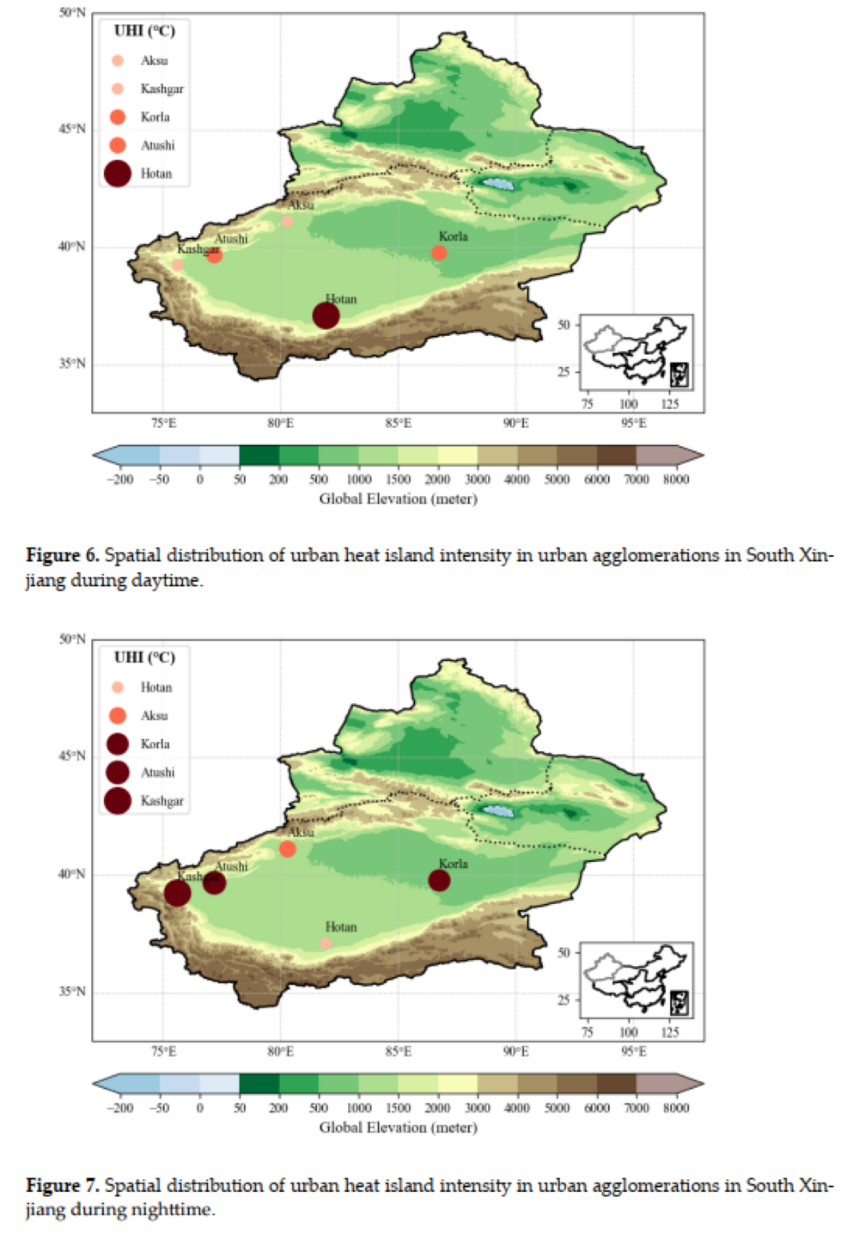
Research Highlight

The urban heat island effect is one of the most significant surface climate changes caused by human activities. The influencing factors of the urban heat island effect are relatively complex, and therefore, the factors affecting changes in urban heat island intensity have always been a research hotspot. The Southern Xinjiang city clusters have experienced rapid urbanization in recent years. With urban expansion and population growth, the urban heat island effect has become one of the significant environmental challenges facing this region. Research on the heat island effect in the Southern Xinjiang city clusters, particularly its spatiotemporal characteristics and influencing factors, is crucial for formulating effective urban planning and environmental protection policies.

The research results indicate that impervious surfaces significantly increased in the Southern Xinjiang region between 1995 and 2015, with the fastest growth occurring from 2010 to 2015. This urban expansion is the primary driving factor for changes in urban heat island intensity. Analysis from 2000 to 2015 reveals significant spatial differences in the urban heat island effect between cities. Hotan had the highest average daytime heat island intensity at 3.7°C, while Aksu had the lowest at approximately 1.6°C. Daytime heat island intensity generally increased during the study period, with the highest intensity occurring in summer. However, nighttime urban heat island trends varied by city, with intensity increasing in most cities. Air temperature, precipitation, and aerosol optical depth (AOD) are the main factors influencing the annual average daytime heat island intensity. The correlation between PM10 concentration and heat island intensity is weak and inconsistent, varying by city and season.
The related findings were published in Remote Sensing under the title "The Role of Subsurface Changes and Environmental Factors in Shaping Urban Heat Islands in Southern Xinjiang". Wen Cong, a Research Intern at the Desert Meteorological Institute, is the first author of the paper.
This research was jointly supported by the Science and Technology Innovation Team (Tianshan Innovation Team) Project (2022TSYCTD0007), the Young Innovation Team Project of China Meteorological Administration (CMA2024QN13), the National Natural Science Foundation of China (42375084, 42305132), the Technical Service for Sandstorm Meteorological Disaster Risk Survey in the Autonomous Region (2023-51), the Third Xinjiang Scientific Expedition (2022xjkk030502), the 2022 Training Program for Ethnic Minority Science and Technology Backbone Talents (2021TP130XJ), the 2024 Observation Experiment Plan Project of the Detection Center (GCSYJH24-01, GCSYJH24-11), the Key R&D Program of Xinjiang Uygur Autonomous Region (2023B02004-2), and the Basic Research Business Fund Project for Central-Level Public Welfare Scientific Research Institutes (IDM2021005).
Original Publication Information: Wen, C.; Sayit, H.; Mamtimin, A.; Wang, Y.; Peng, J.; Aihaiti, A.; Song, M.; Gao, J.; Liu, J.; Wulayin, Y.; et al. The Role of Subsurface Changes and Environmental Factors in Shaping Urban Heat Islands in Southern Xinjiang. Remote Sens. 2024, 16, 4089. https://doi.org/10.3390/rs16214089
Article Link: https://www.mdpi.com/2072-4292/16/21/4089
(Author: Wen Cong Proofreaders: Wu Ye, Xu Wenjing Reviewers: Yao Junqiang, Zhao Ling)

0991-2652429

desert@idm.cn

新疆维吾尔自治区乌鲁木齐市建国路327号


Scan to follow
us on WeChat